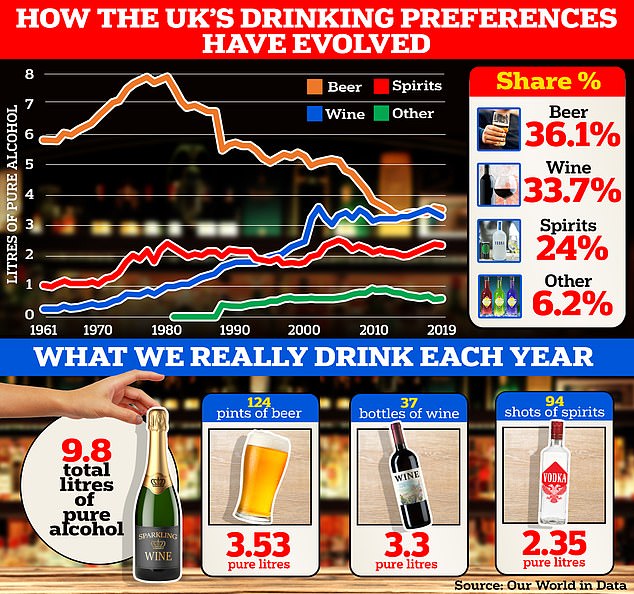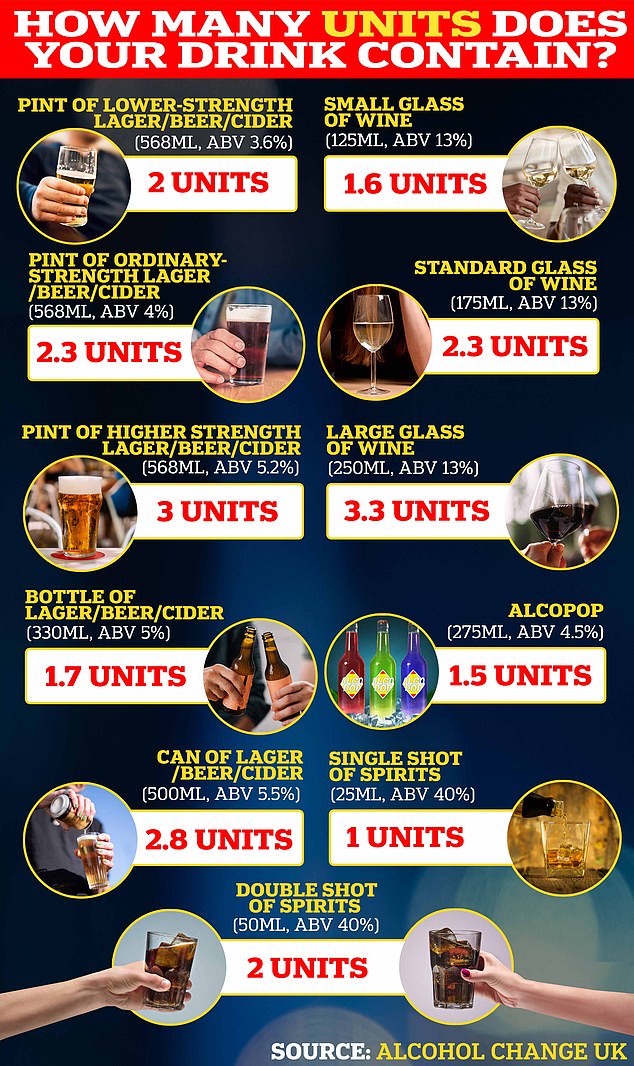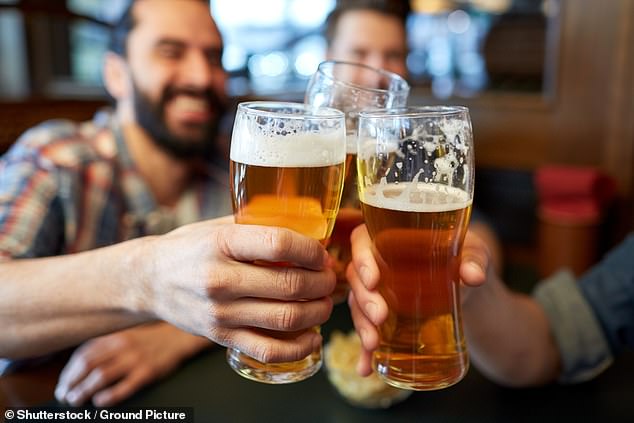Just one beer a day could increase the risk of gout, new research published today suggests.
Analysing the health records of 400,000 Britons, scientists found that men who drank a pint a day were 60 per cent more likely to suffer from the painful joint disease.
This risk of gout, which is a type of arthritis, was even more pronounced among women, at 62 percent.
Historically it was known as “the disease of kings” because it affected middle-aged men and was thought to be caused by excesses of rich foods and wine, such as port.
Monarchs such as King Henry VIII and Queen Victoria suffered from it, although it was a rare disease reserved for the wealthy who could afford such diets.
Men who drank a pint a day were 60 per cent more likely to suffer from gout. This risk was even more pronounced among women, at 62 per cent.

Wine consumption in the UK has soared – it now accounts for more than a third of all alcohol consumed in the country and is almost on a par with beer.
In recent decades, due to the greater availability of foods high in fat, sugar and salt, there has been an increase in diagnoses that has worried doctors.
Severe cases have increased (more than 200,000 people are hospitalized each year) and studies suggest that binge eating and reduced exercise have played a role.
According to Arthritis UK, 1.5 million people in Britain suffer from this debilitating disease.
Gout is an inflammatory reaction to urate crystals that form in and around joints, and primarily affects the feet.
Urate is a byproduct of the body’s digestion of a substance called purine, a chemical found in high levels in certain foods.
Red meat, offal such as liver, shellfish, and alcoholic and sugary drinks are potential sources.
In the new study, researchers tracked the drinking habits of 401,128 Britons aged 37 to 73 who did not suffer from gout.
During a 13-year follow-up, scientists found that the risk of gout increased the more beer people consumed.
A man who drank an average of two or three pints a week was 18 per cent more likely to suffer from gout than a teetotaller.
This risk was more than double in those who drank more than seven pints a week.
However, no level of port consumption resulted in a significant increase in gout risk, the data show.
But scientists also found that no amount of alcohol could reduce the risk of gout.
Among other drinks, a glass of red wine a day increased the likelihood of developing gout by 12 percent among men, they said.
In comparison, this was not shown to increase the risk among women.
White wine and champagne also slightly increased the risk of gout in both sexes.
Writing in the diary, JAMA Network OpenScientists at Soochow University’s Suzhou Medical School said beer and cider may be worse because they contain a high level of purines.
These are broken down into uric acid in the body.
“These findings suggest that certain alcoholic beverages are associated with a similar risk of gout for men and women and that alcohol consumption should be minimized to prevent gout regardless of sex,” they said.
According to Arthritis UK, 1.5 million people in Britain suffer from this debilitating disease.
Experts said many spent more time sitting during Covid lockdowns and may have eaten more snacks and junk food while working from home.
Along with modern diets, the condition is also linked to being overweight and can be caused by medications, such as those designed to combat high blood pressure.
Leading experts have debated the harms of moderate alcohol consumption for decades.
The issue came to the fore last year when WHO officials warned that no amount of alcohol is safe.

The NHS recommends that people drink no more than 14 “units” of alcohol (about six glasses of wine or pints of beer) a week.
The NHS recommends that people drink no more than 14 “units” of alcohol (about six glasses of wine or pints of beer) a week.
This has been diluted in recent decades in light of studies illustrating the dangers of alcohol to health.
Meanwhile, the United States says women should drink no more than seven standard drinks a week and men can have 14..
These measurements include a medium-sized glass of wine and 340 ml of beer, about the size of a normal bottle.

